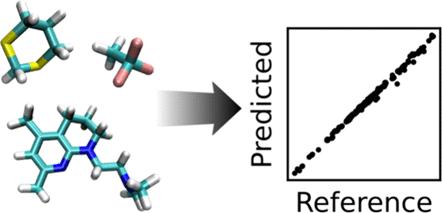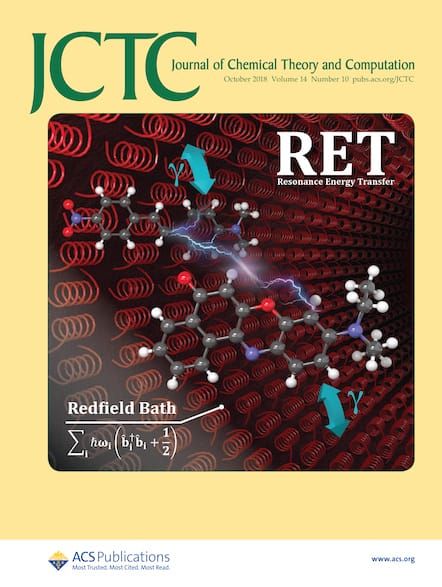Nutmeg and SPICE: Models and Data for Biomolecular Machine Learning
IF 5.7
1区 化学
Q2 CHEMISTRY, PHYSICAL
引用次数: 0
Abstract
We describe version 2 of the SPICE data set, a collection of quantum chemistry calculations for training machine learning potentials. It expands on the original data set by adding much more sampling of chemical space and more data on noncovalent interactions. We train a set of potential energy functions called Nutmeg on it. They are based on the TensorNet architecture. They use a novel mechanism to improve performance on charged and polar molecules, injecting precomputed partial charges into the model to provide a reference for the large-scale charge distribution. Evaluation of the new models shows that they do an excellent job of reproducing energy differences between conformations even on highly charged molecules or ones that are significantly larger than the molecules in the training set. They also produce stable molecular dynamics trajectories and are fast enough to be useful for routine simulation of small molecules.

肉豆蔻和 SPICE:生物分子机器学习的模型和数据
我们介绍了 SPICE 数据集的第二版,这是一个用于训练机器学习潜力的量子化学计算集。它在原始数据集的基础上增加了更多的化学空间采样和更多的非共价相互作用数据。我们在此基础上训练了一组名为 "肉豆蔻 "的势能函数。它们基于 TensorNet 架构。它们采用一种新颖的机制来提高带电分子和极性分子的性能,将预先计算的部分电荷注入模型,为大尺度电荷分布提供参考。对新模型的评估表明,即使是高电荷分子或比训练集中的分子大得多的分子,它们也能出色地再现构象间的能量差异。它们还能产生稳定的分子动力学轨迹,而且速度足够快,可用于小分子的常规模拟。
本文章由计算机程序翻译,如有差异,请以英文原文为准。
求助全文
约1分钟内获得全文
求助全文
来源期刊

Journal of Chemical Theory and Computation
化学-物理:原子、分子和化学物理
CiteScore
9.90
自引率
16.40%
发文量
568
审稿时长
1 months
期刊介绍:
The Journal of Chemical Theory and Computation invites new and original contributions with the understanding that, if accepted, they will not be published elsewhere. Papers reporting new theories, methodology, and/or important applications in quantum electronic structure, molecular dynamics, and statistical mechanics are appropriate for submission to this Journal. Specific topics include advances in or applications of ab initio quantum mechanics, density functional theory, design and properties of new materials, surface science, Monte Carlo simulations, solvation models, QM/MM calculations, biomolecular structure prediction, and molecular dynamics in the broadest sense including gas-phase dynamics, ab initio dynamics, biomolecular dynamics, and protein folding. The Journal does not consider papers that are straightforward applications of known methods including DFT and molecular dynamics. The Journal favors submissions that include advances in theory or methodology with applications to compelling problems.
 求助内容:
求助内容: 应助结果提醒方式:
应助结果提醒方式:


